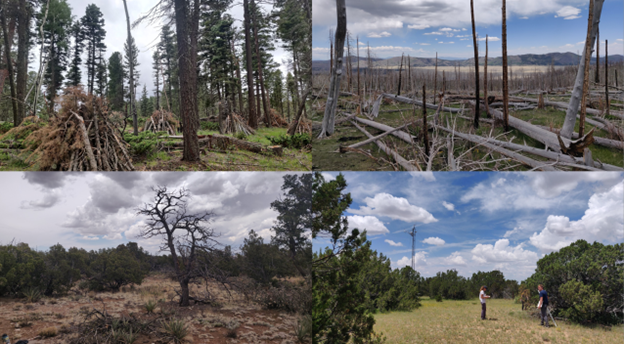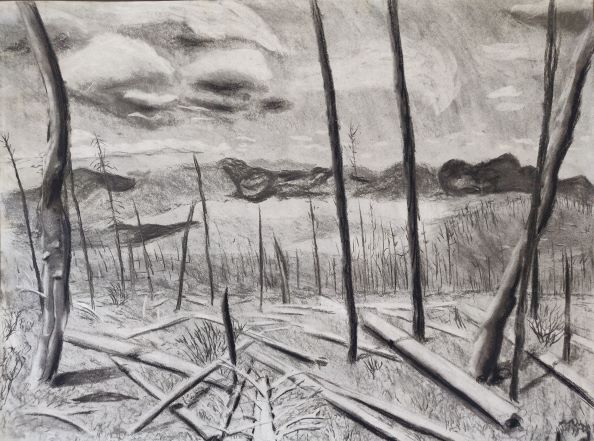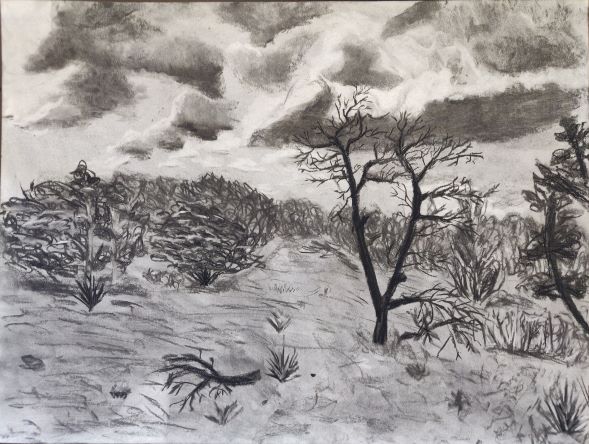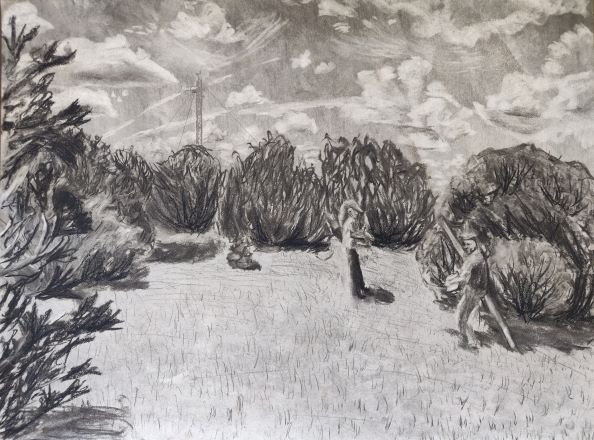Drawing New Mexico’s Ecosystems by Will Crockett
For my project I created a video series, where I draw four of New Mexico’s unique ecosystems that the Litvak lab in UNM’s Biology Department studies. The lab operates a variety instruments at sites across New Mexico, from low-elevation desert grasslands in the Sevilleta National Wildlife Refuge to mixed conifer forests in the Jemez mountains. The lab studies long-term and large-scale ecosystem dynamics at these sites, measuring how the ecosystems are changing. Their work is important in understanding how climate change is impacting ecosystems, and understanding the roles water plays in New Mexico.
My goal for this project was to share some of these sites with the public in a way that is accessible and enjoyable. To do so, I drew four of the sites, and created timelapses of the drawing process. I then created narrations where I talk about the site, where it is, the organisms that live there, and my own experiences at the site. The hope is that by telling people this history of these places will help them understand why we think they are worth studying and preserving, and give them an idea of the impacts changing temperatures and precipitation levels can have.
I chose four sites that I felt offered some interesting parallels and comparisons, and made for nice drawings. The first site I chose was the lab’s MCON site, which stands for mixed conifer. The forest that the site is located in burned down in the Las Conchas fire, and the site allows us to compare data from before and after the fire.
I chose to compare the MCON site to the lab’s NMCON site, which stands for new mixed conifer. This site was started after the Las Conchas fire, in an area of the Jemez mountains that was not burned down. This site was created to compare the intact forest to the burned down area, and to continue to study the impacts of climate change on New Mexico’s high elevation forests. In addition, I chose to draw a picture show casing thinning that the Forest Service had done in the summer of 2021 to help prevent future wildfires.
Next, I chose to draw one of the lab’s piñon-juniper (PJ) site. This site is located near Mountain Air, New Mexico, and is located on a mesa. While traditionally a forest of both piñon and one-seed juniper trees, many of the piñons died as a result of a bark-beetle infestation. This is an example of how changing temperatures can lead to extreme events in an ecosystem that do not initially seem correlated with climate change.
Finally, I drew the lab’s juniper savanna (JSAV) site. This site is located near Mountain Air as well, but sits at an elevation of 6300 ft, about 1000 ft lower than the piñon-juniper forest. Here, the temperatures are higher and precipitation rates are lower, and piñons are not able to survive, but junipers grow healthily. I chose this site to compare it to the piñon-juniper site in order to show what that site might look like in the future in response to rising temperatures and falling precipitation rates.
Together, these sites show the work that the lab is doing, and showcase the effects that climate change is already having on ecosystems in New Mexico.
Here are the pictures from the sites that the drawings are based on:

Here are the Final Drawings:




Created by: Will Crockett
